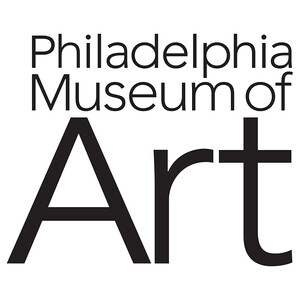March 1–May 14, 2017
2600 Benjamin Franklin Parkway
Philadelphia, Pennsylvania 19130
USA
Hours: Friday 10am–8:45pm,
Saturday–Monday 10am–5pm
T +1 215 684 7860
pressroom@philamuseum.org
The Philadelphia Museum of Art will present the most comprehensive loan exhibition in over 40 years devoted to the most important chapter in the history of watercolor painting in this country. American Watercolor in the Age of Homer and Sargent will bring together more than 170 works—many of them acknowledged masterpieces of this difficult, yet rewarding medium—drawn from public and private collections throughout the country. Tracing the development of the watercolor movement from its passionate embrace by a small, but dedicated group of painters in the 1860s to the flowering of modernism, this sweeping survey will examine the remarkable transformation of the medium that occurred in the late nineteenth and early twentieth centuries and is centered on the achievements of two of its most influential practitioners: Winslow Homer (1836–1910) and John Singer Sargent (1856–1925).
Timothy Rub, the Museum’s George D. Widener Director and CEO, said: “This major gathering of exceptional watercolors tells an extraordinary American story in rich and compelling detail. The exhibition is also a rare event because these fragile works are light-sensitive, exhibited infrequently, and seldom lent. It will be seen only in Philadelphia, where visitors will experience one of the country’s great artistic legacies through brilliantly colored landscapes, still lifes and genre scenes, as well as illustrations and designs for ceramics and stained glass. There has never been such a comprehensive exhibition devoted to this subject, and we are exceptionally grateful to our lenders who have helped to make it possible.”
The exhibition will chronicle the growth of interest in painting with watercolor among leading American artists in the 1860s and its development into a uniquely American medium during the second half of the nineteenth century and the first several decades of the twentieth century. This survey demonstrates the extraordinary range of the works that American artists created in watercolor, from intricately detailed landscapes and genre scenes to architectural renderings and designs for ceramics and stained glass. In addition to exceptional examples by Homer and Sargent, it will examine the art of many other leading American artists such as William T. Richards, Thomas Moran, and Edwin Austin Abbey, whose reputations were greatly enhanced by the popularity of their watercolors. Also featured are works by Thomas Eakins and George Inness, who took full advantage of the popularity that the American Watercolor Society enjoyed during the last several decades of the nineteenth century.
Curator
The exhibition is organized by Kathleen A. Foster.
Publication
American Watercolor in the Age of Homer and Sargent is accompanied by a comprehensive fully-illustrated catalogue, authored by Dr. Foster, published Philadelphia Museum of Art and distributed by Yale University Press.
Support
This exhibition is made possible by The Henry Luce Foundation, The Mr. and Mrs. Raymond J. Horowitz Foundation for the Arts, The Pew Charitable Trusts, the Robert J. Kleberg, Jr. and Helen C. Kleberg Foundation, The Robert Montgomery Scott Endowment for Exhibitions, The Harriet and Ronald Lassin Fund for Special Exhibitions, The Center for American Art at the Philadelphia Museum of Art, Ball Family Foundation, The Jill and Sheldon Bonovitz Exhibition Fund, Mr. and Mrs. William C. Buck, Kathy and Ted Fernberger, Marguerite and Gerry Lenfest, Leslie Miller and Richard Worley, Marsha and Richard Rothman, Clarice Smith, Boo and Morris Stroud, Winsor & Newton, and other donors.
The accompanying catalogue has been generously supported by the Wyeth Foundation for American Art and The Andrew W. Mellon Fund for Scholarly Publications at the Philadelphia Museum of Art.
For additional press information, contact the press office at T 215 684 7860 or pressroom [at] philamuseum.org. For general information, call T 215 763 8100 or visit philamuseum.org.


